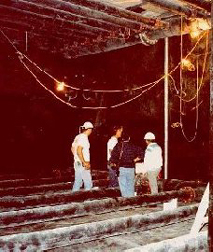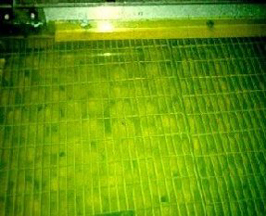
In 1990, construction began on a 24-story, 430,000-square-foot office building known as the 801 Tower in downtown Los Angeles. As means of shifting peak loads and qualifying for incentives and off-peak rates offered by the Los Angeles Department of Water and Power (LADWP), the building was designed to include 8,300 ton hours of thermal energy storage (TES). The system is actually capable of approximately 11,000 ton hours of capacity, which in hindsight, was a stroke of engineering prudence that has paid off with ever-changing electricity prices and energy markets.
Flack and Kurtz of San Francisco, a design engineering firm that provides mechanical, electrical, plumbing, and other services, and the Los Angeles Department of Water and Power (LADWP) may not have anticipated all the changes in energy markets during the past decade. Looking back today, however, this system has proven to be a prime example of engineering foresight. Flack and Kurtz, the building owner, and electric utility recognized the need for flexibility to deal with the uncertainties in electrical supplies that have been exacerbated by efforts toward deregulation and by rising fuel costs. Leadership shown by LADWP with incentives and off-peak rates was part of an overall business plan that has shielded customers in that service territory from many of the problems faced today by ratepayers elsewhere in the state and the rest of the country. Concern about the reliability of energy supplies and the need for design foresight have become the norm in California and the nation.
After incentive payments from LADWP, the system cost approximately $640,000 more than a non-storage air conditioning system. With the reported capability to shift approximately 2,000 kW of electrical demand to off-peak periods, the additional costs can be translated to approximately $320 per kW of peak electrical demand reduction. The net installed cost was approximately $58 per ton hour of actual thermal storage capacity. The cost per shifted kW was a bargain compared to the cost of new generation capacity. Today, that same bargain is even more compelling as costs and environmental impacts associated with new power plants have become more painful and politicized.

The 801 Tower system includes a 180,000-gallon concrete tank with a polyethylene liner and approximately 750,000 spherical ice containers (Cryogel Ice BallsTM) as well as two Trane 700-ton, three-stage centrifugal chillers. The tank is located three levels below the street and adjacent to the underground parking garage. The roof of the concrete tank is formed by a ramp that connects two garage levels. As in most civic centers, parking is a premium in downtown L.A. This tank configuration and ice storage technology were chosen because the tank could be installed in a manner that would not displace parking spaces in the garage.
Flexibility of the system allows for compliance with changes in utility rate structures. This is apparent when looking back at the original specifications as compared to operational demands now being placed on the system which exceed design intent.
The original design intent was to shift the cooling load for a period of 8 hours. However, today the system is actually shifting load for 10 hours per day. According to Brett Hurff, chief engineer for 801 Tower, "Our current agreement with LADWP requires us to keep the chillers shut off completely from 10 a.m. to 8 p.m. The system has enough capacity to carry the extended hours of operation, even without charging fully every night."

The concrete tank was fitted with a 1/8-inch-thick polyethylene liner to prevent leaks due to normal thermal expansion and contraction. The liner allows for 1.5 inches of rigid insulation between the liner and the tank wall. This unique solution to insulating an underground tank offers double-wall leak security as well as a vapor barrier.
Today, designers and utilities across the country have seen the effects of deregulation in California. They have the benefit of studies by the California Energy Commission which show thermal storage as an energy conservation tool as well as an environmentally friendly and economically attractive alternative to new generation capacity. Today's designers also have the benefit of years of proven success with TES systems and equipment. Designing in flexibility to deal with future uncertainties in electrical supplies and prices is not only prudent HVAC engineering practice, it is also essential energy policy.
Victor J. Ott, P.E, is president of Cryogel, San Diego. Cryogel has supplied more than 20 million Ice Balls for domestic and international projects over the past 15 years. For more information, call 858-457-1837 or visit www.cryogel.com.
Publication date: 10/31/2005

Report Abusive Comment